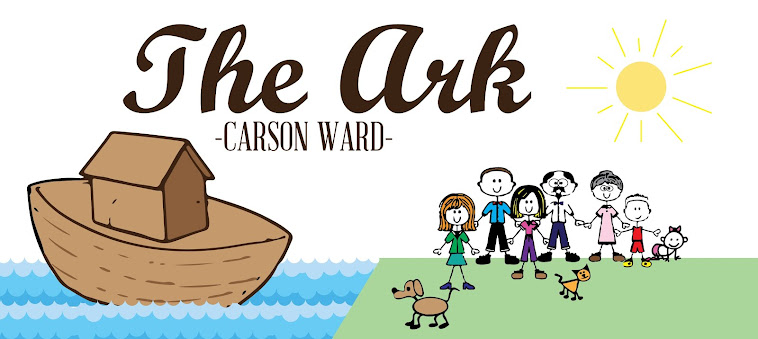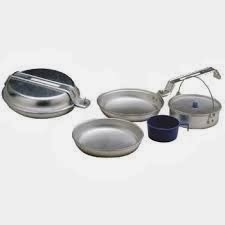I mostly talk about being temporally prepared on this blog, but at times I also talk about being spiritually prepared and why it is important. Temporal and Spiritual preparation go hand in hand! The painting above, "Five of Them Were Wise", hangs in our living room to remind our family daily to be prepared both temporally and spiritually.
"We need to make both temporal and spiritual preparation.... And the preparation most likely to be neglected is the one less visible and more difficult--the spiritual." (Elder Dallin H. Oaks, Quorum of the Twelve Apostles, "Preparation for the Second Coming", Ensign or Liahona, May 2004, 9)
Look Up!
"Today is the time to look to the Source of truth and ensure that our testimonies are strong." (Elder Adrian Ochoa, of the Seventy, The Church of Jesus Christ of Latter-day Saints, 183rd Semiannual General Conference, October 2013)
On Sunday in our Sacrament Meting one of our Ward's full time missionaries shared the importance of having a strong testimony of the gospel of Jesus Christ. He stated, "If we are not prepared for the storms that come upon us life will be hard." As Elder Ochoa stated in his talk, "Look Up", "There is safety in a strong testimony." Here are some things we can learn from his talk...
1) We need a strong testimony
2) We need the constant companionship of the Holy Ghost, "His protection and sustaining power".
3) "It is absolutely critical that you (we) remain constantly worthy of the Spirit."
4) "The companionship of the Holy Ghost is not just a pleasant convenience--it is essential to your (our) spiritual survival."
5) "...our Heavenly Father is mindful of us."
6. "Let us cherish and strengthen our testimonies every day."
Note: To read his entire talk click on "Look Up".
Unshaken...
A few days ago we received our March 2014 Ensign magazine in the mail.There is a great article on pages 60-62 regarding the Japan earthquake which occurred on March 11, 2011. The article is by the Japan Sendai Mission President. He shares some great thoughts and feelings on what he and his full time missionaries experienced and learned during and after the earthquake. He stated, "We could not leave the city--roads were damaged and freeways were closed, and no trains or buses were running. People who had waited in long lines to purchase gasoline were turned away. Panic set in throughout the city. Afraid that they would go without food, people began buying everything in sight." We can learn much from this article that will help us when a trial or disaster happens in our life. Since the article is not showing yet, in a few days you can go to lds.org, click on magazines, click on Ensign, and click on current to read the entire March 2014 article "Unshaken". Here are some main things we can learn from their experiences...
1) Listen to the Spirit and follow its promptings as soon as you hear them.
2) If you have the Spirit with you you can be remarkably calm in a stressful situation.
3) Offer prayers of thanksgiving.
4) They felt their Heavenly Father's guidance on everything they did.
5) They felt a greater need for the strength and power of their Heavenly Father. They needed His Spirit to be with them.
6) They felt peace. God had protected them and calmed their souls.
7) They witnessed miracles in a series of special miracles.
8) God always wants us to remember His Son, Jesus Christ.
"We truly had been 'troubled on every side, yet not distressed; we [had been] perplexed, but not in despair,... cast down, but not destroyed'". (2 Corinthians 4:8-9)
Spiritual preparation will bring us the things listed above. Even in trials and disasters we can feel peace and calmness through the Spirit of the Holy Ghost. Being spiritual prepared will help with the temporal losses and bring hope.
Weekly Assignment: Emergency Family Bag
This week add the following items:

1) Small hand mirror for signaling, a compass and a whistle--Many of you ordered the 5 in 1whistle pictured here. If you have these in each family members 72 Hour Individual Emergency Preparedness Backpack that is great. But you should have one in your Emergency Family Bag too since many of you do not keep your 72 Hour Individual Emergency Preparedness Backpacks in your car. Or, you could purchase separately a small hand mirror (99 Cent Store or discount store), a compass and whistle (discount stores) and place them in a plastic zip lock bag and put it in your Emergency Family Bag. You need these in case you are trapped or need to signal where you are located. Whistles can be heard a long distance and a flashing light can be seen from a far distance. You can order the 5 in 1 Whistle from emergencyessentials.com for about $2-$3.

2) Good Set of Walkie Talkies-- You will only need one good set. These are not the kids toy type. If you have to evacuate and you take two cars, or the family gets separated, each parent should have one of them so you can communicate. Also keep extra batteries in your Emergency Family Bag. Cells phones and texting may not work. I find these at Big 5 on sale often for about $25-$45. You can also find them on line at amazon.com and other websites. I am going to give you two weeks to work on this one.
CONGRATULATIONS! You have just finished your Emergency Family Bag. Gather everything together, place in the sports bag or backpack you already have or purchased and place it in your car(s) or keep it with your 72 Hour Individual Emergency Preparedness Backpacks. We keep ours in our car.
You should have the following in your Family Emergency Bag: Portable regular or solar radio with extra batteries, street maps of local areas/cities, emergency flares and candles, water proof matches, 2 heat cells, flat fuel folding stove, a first-aid kit with a first-aid book, sun block, insect repellent, small tool kit (regular and Philips screw drivers, wrench, pliers, small hammer), Venture 6 Tool, an extra large water proof tarp, roll of duct tape, hand can opener, crowbar, a small wet stone, a travel size board games or card games, small sewing kit, 1-2 mess kits, basic chow set for each family member, 5 in 1 whistle (or, small mirror, compass and whistle) and a good set of Walkie Talkies. See previous blog postings for information regarding these items and where to purchase them.
Next: In two weeks we are going to start working on an Emergency Supply Cleaning Bucket.
Monthly Assignment for March: Sanitation
This month add items for sanitation in case you cannot use your regular toilet...
1) Portable toilet (emergencyessentials.com for $14.95)
 2) Enzyme Packets (You will need several. You can purchase them at emergencyessentials.com, 60 cents a packet). The odor is quite strong, keep them in a large plastic zip lock bag. I store ours in the zip lock bag in our portable toilet.
2) Enzyme Packets (You will need several. You can purchase them at emergencyessentials.com, 60 cents a packet). The odor is quite strong, keep them in a large plastic zip lock bag. I store ours in the zip lock bag in our portable toilet.
3) Cat Litter (You can purchase them discount stores like the 99 Cent Store, you will need several bags or other stores.)
4) Large heavy black trash bags (Costco or Sam's Club size)
5) Toilet paper & paper towels (Costco or Sam's Club size)
6) Baby wipes (You can purchase these at discount stores like the 99 Cent Store, Costco or Sam's Club. You should have several stored)
7) Disinfectants--Clorox bleach, Lysol, hand sanitizer, etc.
8) Privacy Shelter (you can purchase this at emerencyessentials.com for $89.95 or construct your own with a large blanket or ex-large plastic tarp, rope, clothes pins, duct tape, nails and hammer)
Keep all of these items together in your garage or a home storage shed.
Important Information: Check out the posting "Sanitation" under Postings on the right for more information, why you need these items, how they work (example: enzyme packets), how to use the portable toilet correctly and how to dispose of human waste.
Emergency Preparedness Ideas
 WARNING! Carbon Monoxide Poisoning--Every home should have a carbon monoxide detector. It works like a smoke detector. It is a small box you place on your wall or plug in, usually in the hallway. If their is carbon monoxide in your home the alarm will go off. We have one in our home. They run about $20 for a battery operated one, up to about $45 for the plug in type.
WARNING! Carbon Monoxide Poisoning--Every home should have a carbon monoxide detector. It works like a smoke detector. It is a small box you place on your wall or plug in, usually in the hallway. If their is carbon monoxide in your home the alarm will go off. We have one in our home. They run about $20 for a battery operated one, up to about $45 for the plug in type. Just recently 4 in a family of 6 in Pocatello, Idaho died from carbon monoxide poisoning. The coroner suspects it was due to a natural gas appliance leak. Two of their children were serving full time missions at the time for the Church of Jesus Christ of Latter-day Saints.
Carbon monoxide has no odor, color or taste. It diminishes your ability to absorb oxygen. Symptoms are often mistaken for something else. When carbon monoxide problems develop slowly, they can be mistaken for the flu.
Click here to read the article.
Simple Household Emergency Medical Help...

1) Stuffy nose? Before you head to the drug store for a high-priced inhaler (not the Asthma type) filled with mysterious chemicals, try chewing on a couple of curiously strong Altoids peppermints. They'll clear up your stuffed nose.

2) Achy muscles from a bout of the flu? Mix 1 tablespoon of horseradish in 1 cup of olive oil. Let the mixture sit for 30 minutes, then apply it as a massage oil for instant relief for aching muscles.

3) Sore throat? Just mix 1/4 cup of vinegar with 1/4 cup of honey and take 1 tablespoon six times a day. The vinegar kills the bacteria. My grandmother use to give this to me when I had a sore throat.
More to come next week!
Comments: All your comments, ideas, suggestions and experiences are welcome! We all learn from each other. Thank you for your comments.






























